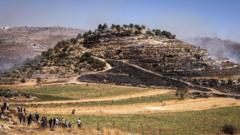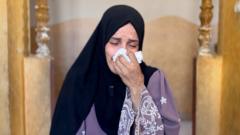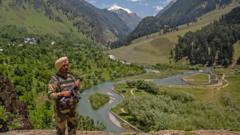The recent massacre in Pahalgam, Kashmir, left 26 people dead and 17 injured, shattering a serene getaway with scenes of horror as tourists fell victim to militant gunfire.
Tragedy Strikes Tranquil Kashmir as Militants Attack Tourists

Tragedy Strikes Tranquil Kashmir as Militants Attack Tourists
A peaceful day in Kashmir turned into a nightmare as militants killed 26 individuals, highlighting the region's ongoing violence despite years of calm.
On a serene Tuesday afternoon, the Baisaran Valley in Kashmir was vibrant with life when a sudden act of violence took center stage, claiming the lives of 26 individuals, including newlyweds, and injuring another 17. Shubham Dwivedi and Aishanya Pandey, fresh from their wedding, ventured into the beautiful landscapes of Pahalgam to enjoy a picturesque view. Tragically, their joy was short-lived as militants launched an attack on the unsuspecting group of tourists.
Eyewitness accounts of the massacre paint a horrifying picture of chaos. Many described the shock of beautiful surroundings shattered by deafening gunfire, sending people fleeing for safety amid the cries for help and panic. The attackers indiscriminately shot at families and friends enjoying the natural beauty of the region, reminiscent of a calmer time in Kashmir before violence had re-emerged.
This tragic incident serves as a stark reminder of the fragile security situation in Kashmir, an area mired in conflict between India and Pakistan that has seen fluctuating levels of violence over the decades. Following the Indian government's attempts to tighten control over the region in 2019, hopes for stability and tourism revitalization were high, but this attack has severely undermined that optimism.
Coverage of the aftermath includes a heartbreaking image of a woman mourning beside her husband, shot dead in the violence, her wedding bangles still adorning her wrists—a symbol of a life cut tragically short. The community grapples with the loss and horror of such senseless violence, as the region of Kashmir, known for its beauty, once again becomes associated with tragedy.





















